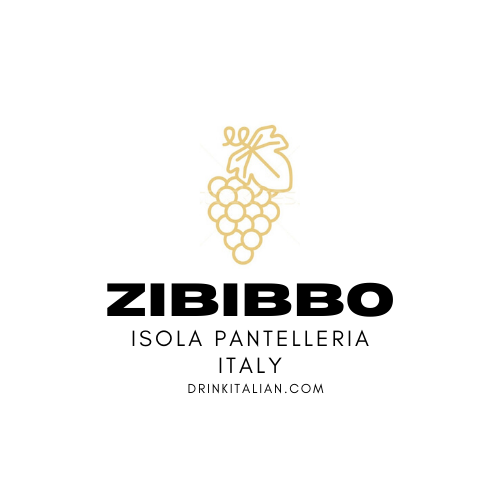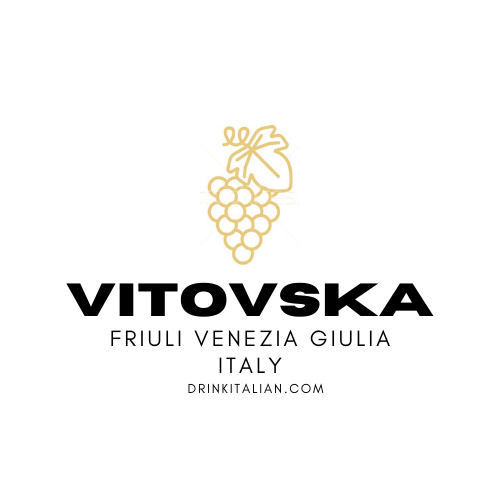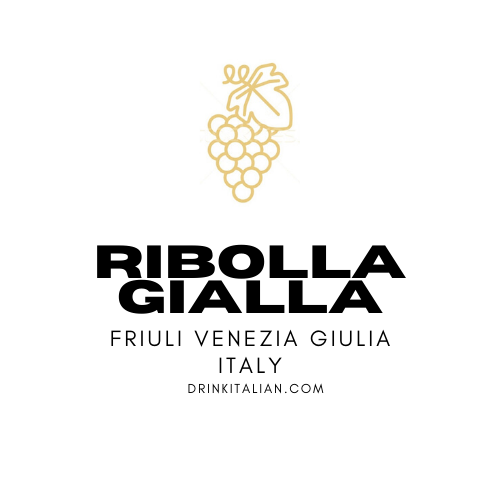Before there was Chianti. Before there was Brunello. There was Sangiovese. This historic red grape, native to central Italy, has been cultivated for centuries and remains the most widely planted red variety in the country. Known for its savory charm, bright acidity, and ability to express terroir like few others, Sangiovese is both a winemaker’s canvas and a drinker’s delight.
Table of Contents
What is Sangiovese grape?
Sangiovese is the king of the Italian red grape varieties. Definitely the most planted one. It is famous mainly for the Tuscan wines but the Emilia Romagna version is also well known. However, Sangiovese is found in every region in Italy except Valle d’Aosta and Trentino-Alto Adige.
The Sangiovese grape is a thin-skinned, red wine variety native to Italy, most famous for producing Chianti, Brunello di Montalcino, and Vino Nobile di Montepulciano. It is revered for its bright acidity, moderate tannins, and savory, earthy character that evolves beautifully with age.
Its name—sanguis Jovis, or “the blood of Jupiter”—hints at its mythical stature. And while it takes many forms across Italy, one thing remains constant: Sangiovese captures the soul of the Italian countryside in every glass.
Quick Facts / Snapshot on Sangiovese grape
• Color: Red
• Synonyms: Brunello, Sangiovese Grosso, Prugnolo Gentile, Morellino, Nielluccio (Corsica)
• Parentage: Likely a cross between Ciliegiolo and Calabrese Montenuovo
• Primary Styles: Dry red wine; some rosé
• Regions Grown: Tuscany, Umbria, Marche, Emilia-Romagna, Corsica, California, Australia
• Famous DOCG Wines: Chianti Classico, Brunello di Montalcino, Vino Nobile di Montepulciano, Morellino di Scansano
• Aroma Profile: Cherry, tomato leaf, dried herbs, tobacco
• Wine Body: Medium to full
Origin & History
Sangiovese has been cultivated in Italy since at least the 16th century, though its roots likely go back much further. It is believed to have originated in Tuscany and is now found in many central and southern Italian regions. DNA profiling confirms its parent grapes as Ciliegiolo and the rare Calabrese Montenuovo. Despite its long history, Sangiovese wasn’t widely studied or understood until the 20th century, when modern winemaking gave it new life.
Vineyard Characteristics (Ampelography, Viticulture)
Sangiovese is a vigorous, late-ripening variety that needs ample sunlight and warmth to fully develop flavors. It prefers hillside vineyards with good drainage and thrives in limestone-based soils.
• Clusters: Medium to large, conical
• Berries: Medium-sized, thin-skinned, prone to rot and mildew
• Challenges: Variable quality depending on clone and site; sensitive to excessive yields
Climate & Terroir
Sangiovese excels in warm but temperate climates with significant diurnal shifts. It shows best in:
• Galestro (limestone-shale) soils of Chianti
• Clay-rich soils of Montalcino
• Sandy and volcanic soils of coastal Tuscany and Lazio
Its expression varies dramatically by site—structured and age-worthy in Montalcino, fresh and zippy in Romagna, fruity and rustic in Corsica.
Winemaking & Styles
Sangiovese can be vinified in many styles, from light, fresh reds to deeply structured and oak-aged wines. Traditional methods favor long maceration and large oak casks, while modern producers may use French oak barriques for a softer, richer profile.
• Chianti: Bright, tart cherry, herbal, medium-bodied
• Brunello: Bold, tannic, long-aging
• Vino Nobile: Elegant, balanced
• Super Tuscans: Often blended with Cabernet Sauvignon or Merlot
Wine Profile: Tasting Notes & Structure
• Color: Medium ruby to garnet
• Aromas: Red cherry, tomato leaf, dried oregano, violets, leather
• Palate: Medium to high acidity, moderate to firm tannins
• Finish: Dry, earthy, sometimes smoky or mineral
Food Pairings & Occasions
Sangiovese’s acidity and savory flavors make it a versatile partner for food:
• Tomato-based pasta sauces
• Florentine steak (bistecca alla fiorentina)
• Grilled sausages and pork
• Aged pecorino and Parmigiano
• Pizza and rustic stews
Synonyms & Genetic Lineage
• Synonyms: Brunello (Montalcino), Prugnolo Gentile (Montepulciano), Morellino (Scansano), Nielluccio (Corsica)
• Genetic Lineage: Offspring of Ciliegiolo and Calabrese Montenuovo
• Clonal diversity: Over 100 registered clones in Italy, reflecting wide regional variation
Where It’s Grown (Regions, DOCs, Appellations)
• Tuscany: Chianti, Chianti Classico, Montalcino, Montepulciano, Scansano, Carmignano
• Umbria: Torgiano Rosso, Montefalco Rosso
• Emilia-Romagna: Sangiovese di Romagna
• Marche & Lazio: Rosso Piceno, Cesanese blends
• Corsica (France): Known as Nielluccio
• New World: Found in California, Oregon, Australia, Argentina, and increasingly in Washington and Baja California
Legal Status & DOC/DOCG Uses
Sangiovese is the backbone of several of Italy’s most iconic appellations:
• DOCG: Chianti Classico, Brunello di Montalcino, Morellino di Scansano, Vino Nobile di Montepulciano
• DOC: Rosso di Montalcino, Rosso Piceno, Torgiano Rosso
• IGT: Used in “Super Tuscans” where international blending is allowed
Notable Grapes & Confusions
• Nebbiolo: Both high in acidity and age-worthy, but Nebbiolo has firmer tannins and more floral notes
• Montepulciano (grape): Despite similar names, Montepulciano is a separate variety, softer and fruitier
• Pinot Noir: Similar in its transparency to terroir, but Sangiovese is more rustic and savory
Noteworthy Producers / Wines to Try with Sangiovese grape
• Brunello: Biondi Santi, Poggio di Sotto, Il Marroneto
• Chianti Classico: Fontodi, Isole e Olena, Castell’in Villa
• Super Tuscan: Tignanello (Antinori), Le Pergole Torte (Montevertine), Colore (Bibi Graetz)
• Romagna: Fattoria Zerbina, Noelia Ricci
Market Trends / Availability
With global interest in Italian wines on the rise, Sangiovese continues to expand into new markets. The rise of natural wine and renewed interest in terroir-driven reds have made high-quality Chianti Classico and lesser-known Sangiovese wines increasingly sought after.
Why Drink It / Cultural Notes
Drinking Sangiovese is a direct line to the Italian table. It’s a grape that speaks in dialects—changing its accent from town to town—but always telling a story of hills, stone, soil, and time. Whether in a simple trattoria or a white-tablecloth enoteca, Sangiovese brings Italy to the glass.
FAQs on Sangiovese grape
Is Sangiovese a dry wine?
Yes, nearly all Sangiovese wines are vinified dry.
What does Sangiovese taste like?
Cherry, herbs, earthy notes, and savory spice.
What’s the difference between Sangiovese and Brunello?
Brunello is a clone of Sangiovese grown in Montalcino and aged longer—richer and more powerful.
Is Sangiovese good for aging?
Yes—especially in Brunello and Super Tuscan styles. Top wines can age 10–30 years.
Is Sangiovese the same as Montepulciano?
No—Montepulciano is a different grape variety entirely. However, there is a town in Tuscany called Montepulciano where they produce wines with Sangiovese grape. It is confusing, I know!
Please come back soon to learn more about Italian wines, spirits, and non-alcoholic beverages.
Send us an email if you want to suggest edits, or if you are looking for more info, at
cheers@drinkitalian.com
Two of the best books about Italian grapes, where some of this information come from, are:
– Native Grapes of Italy, by Ian d’Agata
– Italian Wine Unplugged, by Steve Kim
Additionally, you can discover the other grapes from Tuscany.


